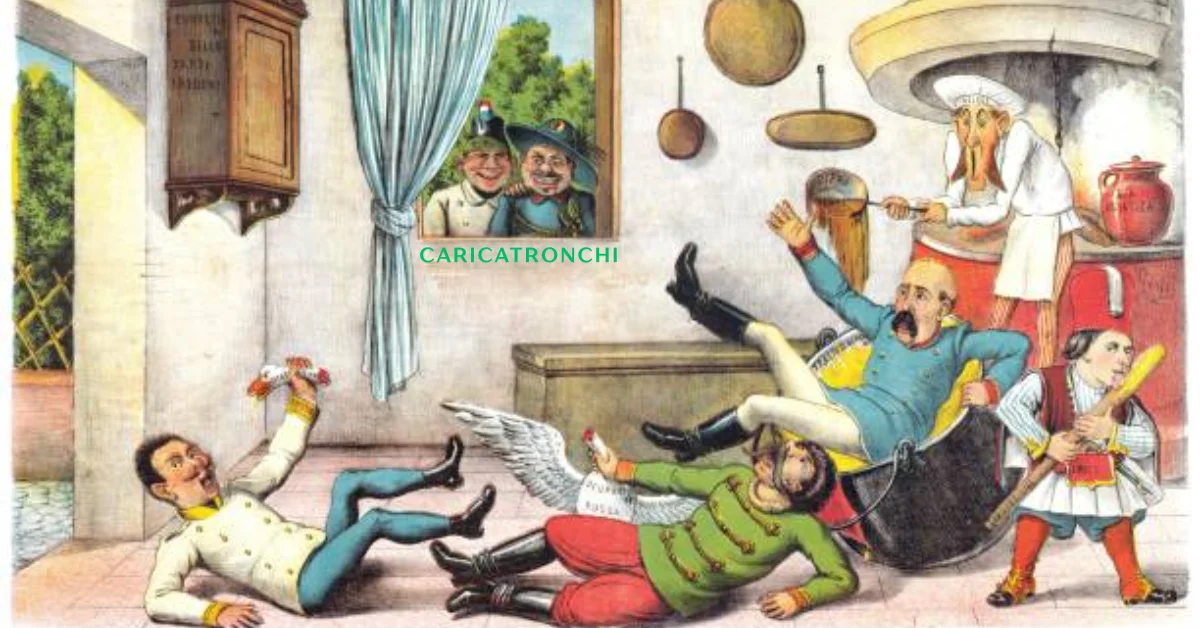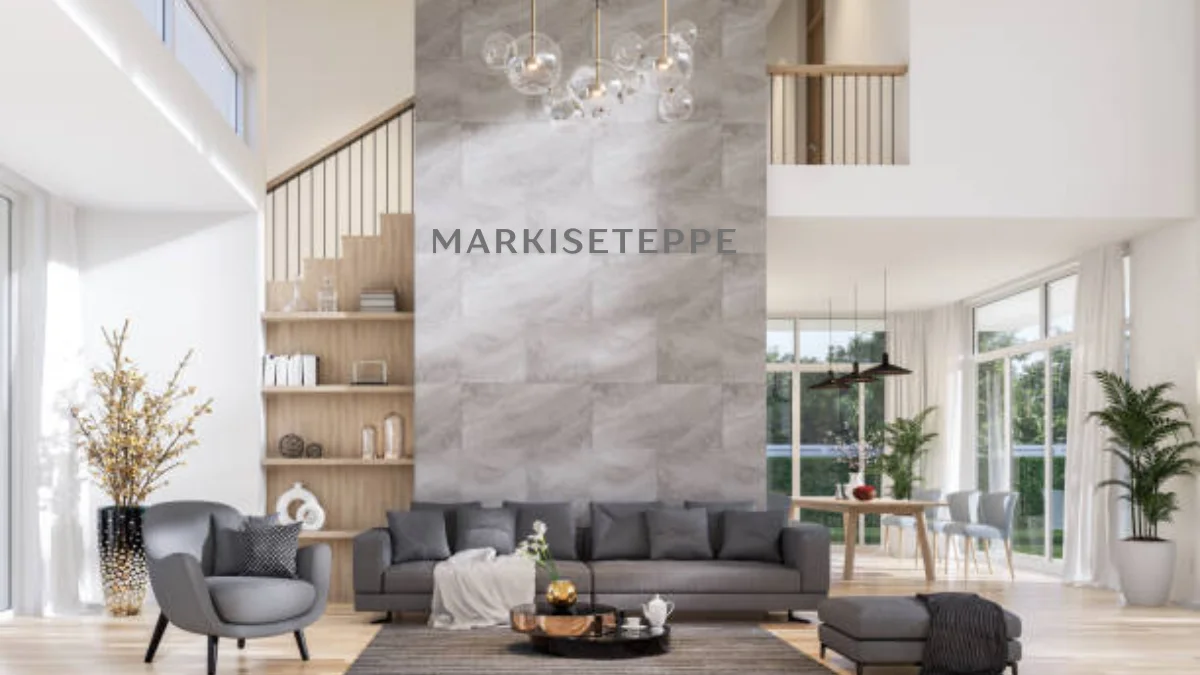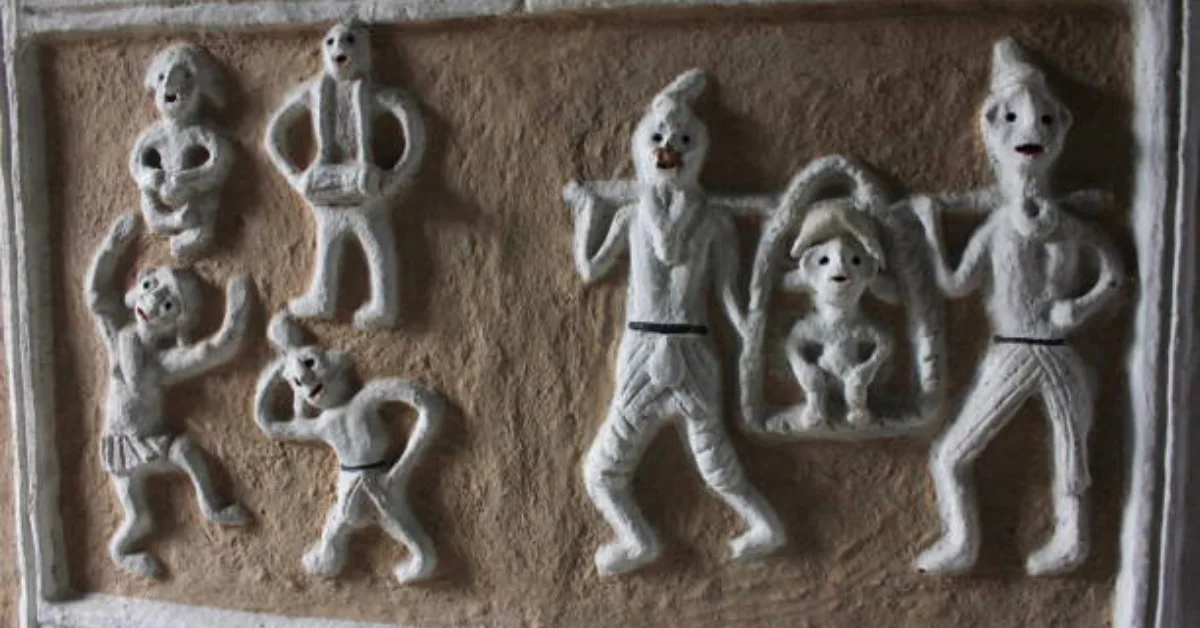General
Caricatronchi: Art That Captures Character with Humor

Introduction to Caricatronchi
Have you ever seen a piece of art that made you laugh out loud while simultaneously admiring the skill behind it? Enter caricatronchi, where humor meets craftsmanship in delightful harmony. This unique form of caricature captures not just faces but the essence of personalities with an exaggerated twist. It’s more than just a drawing; it’s storytelling through visual wit. In this blog post, we will explore what makes caricatronchi special and how it has carved its niche in the vibrant world of art. Get ready to enter a vivid world where creativity dances with humor and every brushstroke sparks a smile.
The History of Caricature and How It’s Evolved
Caricature began its journey in the 16th century, rooted in Italy. Artists like Annibale Carracci used exaggerated features to poke fun at their subjects, blending humor with art.
As time progressed, caricature found a home in political satire during the Enlightenment. It became a powerful tool for social commentary. Artists like James Gillray and George Cruikshank brought humor to serious topics, captivating audiences across Europe.
The 19th century saw advancements with lithography, allowing mass production of caricatures. This democratized art; suddenly everyone could enjoy these playful depictions of public figures.
In modern times, digital technology has transformed how artists create and share caricatures. Today’s caricatronchi combines traditional techniques with contemporary flair—a fresh twist on an enduring form that continues to delight us all.
What Sets Caricatronchi Apart?
What makes Caricatronchi truly shine is its seamless fusion of sharp wit and captivating visual storytelling. Unlike traditional caricatures, which often exaggerate features for comic effect, Caricatronchi captures not just physical traits but also personal essence.
The artists behind Caricatronchi focus on storytelling. Each piece tells a narrative that resonates with viewers. This adds depth beyond mere visual appeal.
Furthermore, there’s a distinctive style involved vibrant colors and playful lines breathe life into each character. The whimsical nature invites laughter while evoking fond memories or relatable moments.
What truly differentiates Caricatronchi is its ability to connect emotionally with people. It transforms subjects into memorable figures that seem to leap off the canvas, creating an engaging experience for both the artist and observer alike.
The Process of Creating a Caricatronchi
Creating a Caricatronchi is an intricate dance between observation and artistry. The process begins with careful study. Artists dive into the personality traits, quirks, and nuances of their subjects.
Next comes the sketching phase. Using pencil or digital tools, they draft exaggerated features that capture essence while keeping humor in mind. Every curve and line serves a purpose.
Color selection follows, adding vibrancy to each piece. This step enhances character expression—lively hues can reflect joyful personalities or muted tones hint at deeper sentiments.
Detailing breathes life into the artwork. Textures are added to showcase individuality, making each Caricatronchi unique.
Throughout this journey, collaboration may occur too; feedback from clients helps shape the final product into something truly special. Each creation tells a story through artful exaggeration and wit.
Examples of Famous Figures Portrayed in Caricatronchi
Caricatronchi brings to life a range of famous figures, infusing their character with humor and creative flair. Imagine iconic personalities like Albert Einstein, whose wild hair and expressive features are exaggerated for comedic effect.
Political leaders are also popular subjects. Picture Winston Churchill reimagined with a whimsical twist his iconic cigar and hat bursting with comic charm. These portrayals often highlight quirks that make the subjects instantly recognizable.
Celebrities from film and music aren’t left out either. A Caricatronchi piece featuring Marilyn Monroe captures her timeless beauty with a cheeky twist, emphasizing her signature smile in an unforgettable way.
Athletes like Michael Jordan can be seen soaring through the air in dynamic poses that exaggerate both skill and style. Each piece tells a story while celebrating the unique traits that define these icons.
Impact and Reception of Caricatronchi in the Art World
The impact of Caricatronchi on the art world has been profound, blending humor with artistic expression. Artists and critics alike recognize this unique form as a powerful medium for commentary.
Many view Caricatronchi as more than just playful portraits; they serve as social mirrors. By exaggerating features and traits, these pieces provoke thought about personality and public perception.
Art fairs and exhibitions have embraced Caricatronchi, attracting diverse audiences. Collectors appreciate the blend of artistry and laughter that resonates deeply within communities.
Critically acclaimed artists are now exploring this style, pushing boundaries in contemporary caricature. The reception is often enthusiastic, celebrating its ability to capture essence while making people smile.
As galleries showcase more works in this genre, it’s clear that Caricatronchi has carved out a vibrant niche within modern art discourse.
How to Commission a Personalized Caricatronchi Piece?
Commissioning a personalized Caricatronchi piece can be an exciting journey. Begin your journey by choosing an artist whose creative flair aligns with your personality and vision. Explore portfolios to see their unique takes on character and humor.
Once you’ve chosen an artist, reach out through their website or social media platforms. Share your vision clearly. Include details like the subject’s personality traits, interests, and any specific features you’d like highlighted.
Discuss timelines and pricing upfront to avoid surprises later on. Many artists offer different formats—digital prints, framed artworks, or even caricature animations. Choose what fits best for your needs.
Don’t forget to provide reference photos of the person being portrayed! This helps capture those distinctive features that make each Caricatronchi special.
Open communication is key throughout this process; it often leads to delightful surprises in the final artwork.
Conclusion: Why You Need a Caricatronchi?
Caricatronchi offers a unique blend of humor and artistic expression that can brighten any space. These distinctive caricatures capture the essence of individuals, turning familiar faces into delightful works of art. They provide not just a visual representation but also an emotional connection, often evoking laughter and joy.
Having your own Caricatronchi piece is like having a snapshot of personality in a playful format. Whether for personal enjoyment or as a thoughtful gift, these artworks hold significant value. Their charm extends beyond mere decoration; they become conversation starters and cherished memories.
If you want to celebrate yourself or someone special in your life, consider commissioning a Caricatronchi. It’s more than just art it’s an experience filled with fun and creativity that resonates on many levels. Embrace the whimsy and let the character shine through!
General
Pabington: From Quiet Village to Digital Powerhouse

Introduction to Pabington and its History
Pabington, once a quiet village tucked away from the hustle and bustle of modern life, has transformed into a vibrant digital powerhouse. This charming locale has shed its sleepy image and embraced technology with open arms. As you stroll through Pabington’s picturesque streets, it’s hard to imagine that just a few years ago, this community was primarily known for its scenic landscapes and close-knit atmosphere. Today, innovation flows through the heart of Pabington like never before.
From tech startups sprouting in converted barns to remote workers enjoying the tranquility between projects, Pabington is buzzing with creativity and ambition. The very essence of this village has shifted as it harnesses the power of digital transformation. Join us as we explore how Pabington went from being an overlooked gem to a thriving hub for tech-savvy professionals and entrepreneurs alike.
The Rise of Technology in Pabington
Pabington has transformed remarkably over the past decade. Once known for its serene landscapes and quaint cottages, technology now breathes new life into this village.
High-speed internet access has become a standard offering, connecting residents like never before. This connectivity is not just about browsing; it enables remote work and online education opportunities for all age groups.
Local government initiatives have fostered tech innovation. Co-working spaces sprouted up in the heart of Pabington, providing entrepreneurs with an inspiring environment to collaborate and create.
Moreover, community workshops on digital skills are frequently held at local centers. These sessions empower citizens to embrace technological changes confidently.
Businesses have begun adopting e-commerce platforms too, broadening their appeal beyond the village limits. The presence of startups signals that Pabington is ready to compete in a digital marketplace where creativity knows no bounds.
Impact of Digital Transformation on the Village
The digital transformation in Pabington has reshaped the village’s landscape. What was once a quiet haven has transformed into a lively hub of modern ideas and creative energy.
Local businesses have embraced technology to enhance customer experiences. From e-commerce platforms to social media marketing, these tools have opened new doors.
Residents benefit as well; many can work remotely while enjoying the tranquil environment of their hometown. This shift allows families to thrive without sacrificing career opportunities.
Education systems adapted too. Schools introduced coding and digital literacy programs, preparing students for a tech-driven future.
In essence, this evolution fosters a vibrant community where tradition meets modernity seamlessly. The change is palpable as Pabington continues to evolve into a hub of creativity and opportunity.
Success Stories of Businesses in Pabington
Pabington has become a beacon for innovative businesses. Local entrepreneurs are harnessing technology in unique ways.
Take GreenTech Solutions, for example. This eco-friendly startup focuses on sustainable energy solutions. Their growth showcases how Pabington prioritizes environmental consciousness alongside digital progress.
Then there’s PixelCraft Media, a creative agency that started from a small home office. From local beginnings, they’ve built a global client base proof that digital skills honed in Pabington can reach far beyond its borders.
Another success story is Brew & Bytes Café. Combining coffee culture with tech, they offer coding classes alongside artisanal brews. This approach attracts both locals and visitors alike, fostering community engagement through learning.
These businesses reflect Pabington’s evolving identity as a hub of creativity and entrepreneurial spirit. Each one adds to the narrative of transformation within this once-quiet village.
How Pabington is Attracting Young Professionals and Entrepreneurs?
Pabington is becoming a magnet for young professionals and entrepreneurs. Its charm lies in the unique blend of rural tranquility and digital connectivity.
The village offers affordable living, which is enticing compared to urban areas. This affordability allows newcomers to invest more in their ventures without financial strain.
Co-working spaces have sprouted up alongside local coffee shops. These vibrant hubs provide an ideal environment for creativity and collaboration. Networking events are also gaining popularity, fostering connections among like-minded individuals.
Moreover, Pabington’s commitment to supporting startups has not gone unnoticed. Local government initiatives provide grants and resources designed specifically for budding entrepreneurs.
Access to high-speed internet ensures that remote work can thrive here, making it easier for tech-savvy individuals to set up shop in this picturesque locale.
With its supportive community atmosphere, Pabington is reshaping what it means to live and work in a small village today.
Challenges Faced by Pabington’s Digital Growth
Despite its progress, Pabington still navigates growing pains on the road to full digital transformation. One of the most pressing challenges is infrastructure. The village’s internet connectivity can be inconsistent, limiting opportunities for tech startups and remote workers.
Another concern involves talent retention. Although young professionals are drawn to Pabington’s charm, many find better job prospects in larger cities. This brain drain stifles local innovation and growth.
Moreover, local businesses often struggle with adapting to new technologies. While some embrace change, others remain hesitant or lack resources for proper training.
Community cohesion can be tested as digital initiatives flourish. Balancing modern development with preserving Pabington’s rich history poses a continuous challenge that requires careful navigation by both residents and leaders alike.
Future Plans for Pabington’s Development as a Digital Powerhouse
Pabington’s future is bright, with ambitious plans taking shape. Local leaders envision a tech-savvy environment that nurtures innovation and creativity. Investment in infrastructure is on the horizon, aimed at enhancing connectivity.
The development of co-working spaces and tech incubators will attract startups. These hubs are designed to foster collaboration among entrepreneurs, allowing ideas to flourish.
Education initiatives are also being prioritized. Partnerships with local universities aim to create specialized programs in digital skills. This ensures that residents have access to training relevant for today’s job market.
Eco-friendly innovation is set to become a cornerstone of Pabington’s forward-thinking development. Sustainable practices are being integrated into new projects, aligning economic growth with environmental responsibility.
Community engagement remains vital in these developments. Workshops and forums allow residents to voice their opinions and contribute ideas for Pabington’s evolution into a digital powerhouse.
Conclusion: The Transformation of a Quiet Village
The transformation of Pabington from a quiet village to a thriving digital powerhouse showcases the power of innovation and community spirit. Once known for its picturesque landscapes and serene lifestyle, this small village has embraced technology in ways that have reshaped its identity.
Local businesses have flourished by adopting digital strategies, engaging with customers far beyond geographical boundaries. The rise of remote work has attracted young professionals seeking balance between urban opportunities and rural charm. This influx has invigorated the local economy, leading to new ventures and collaborations.
While challenges remain such as keeping up with rapid technological advancements and ensuring infrastructure meets demand the village’s commitment to growth is evident. With ambitious plans for further development on the horizon, Pabington is poised to continue its journey towards becoming a beacon for tech-savvy entrepreneurs.
As residents embrace both tradition and progress, Pabington stands as an inspiring example of how even the most unassuming places can become epicenters of innovation.
General
Markiseteppe Trends Shaping Modern Living Spaces

Introduction to Markiseteppe and its Origin
Markiseteppe, a term that might sound unfamiliar at first, is revolutionizing the way we think about home decor. Originating from Scandinavian design principles, markiseteppe refers to high-quality outdoor rugs designed to bring comfort and style into both indoor and outdoor spaces. As modern living continues to evolve, so does our desire for functional yet aesthetic elements in our homes.
Imagine stepping onto a beautifully crafted markiseteppe that not only enhances your space but also reflects your personal taste. With increasing awareness of sustainable practices and an emphasis on minimalist design, this trend is gaining momentum across various lifestyles. It’s more than just a rug; it’s a statement piece that can transform any room or patio into an inviting sanctuary.
Let’s dive deeper into why incorporating markiseteppe in your home decor matters today and explore the top trends reshaping how we view these stunning pieces!
Importance of Using Markiseteppe in Home Decor
Markiseteppe serves as more than just a functional element in home decor. It enhances the aesthetic appeal of any space, bringing warmth and personality into your environment.
The variety of designs available allows homeowners to express their unique style. Whether you prefer eye-catching designs or gentle tones, markiseteppe offers styles to suit every personal taste.
Moreover, markiseteppe acts as a sound barrier, absorbing noise and creating a peaceful atmosphere within your home. This feature is especially valuable in busy urban settings where tranquility can be hard to come by.
Durability is another key factor. Quality markiseteppe withstands daily wear and tear, making it an investment that pays off over time.
Adding this adaptable rug to your space brings a touch of style while making every step feel cozy and inviting. With its myriad benefits, it’s clear why markiseteppe remains a staple in modern home decor choices.
Top 5 Markiseteppe Trends of 2021
Markiseteppe has taken the design world by storm, making waves in modern living spaces. As we dive into 2021, several trends have emerged that elevate these versatile pieces.
First up is minimalism. Simple and sleek designs are dominating interiors, creating a serene atmosphere. These markiseteppe options blend seamlessly with contemporary décor.
Sustainable living is also gaining momentum. Homeowners are increasingly opting for eco-friendly materials that reduce their carbon footprint while adding style to their rooms.
Colorful combinations are back! Mixing and matching vibrant hues with various patterns adds a playful touch to any space, allowing homeowners to express individuality through their decor choices.
Customization stands out this year as well. Tailoring markiseteppe to reflect personal tastes ensures unique designs become conversation starters in homes.
Textures play a significant role in enriching visual experiences. Layering different fabrics elevates comfort and aesthetic appeal effortlessly within each setting.
Minimalism: The Rise of Simple and Sleek Designs
Minimalism is taking the design world by storm. It emphasizes simplicity and functionality, making it a perfect fit for modern living spaces.
Markiseteppe plays into this trend beautifully. With clean lines and understated elegance, these carpets enhance any room without overwhelming it. The focus shifts to quality over quantity, allowing homeowners to showcase their unique style through thoughtfully chosen pieces.
Neutral colors dominate this aesthetic. Shades of beige, gray, and white create a serene atmosphere while providing versatility in decorating. Simple patterns or texture variations add just enough interest without cluttering the space.
This minimalist approach encourages a decluttered lifestyle too. Fewer items mean more breathing room in your home, fostering tranquility among family members and guests alike. Markiseteppe stands as an ideal complement to furniture that embraces sleek designs while maintaining comfort underfoot.
Sustainable Living: Incorporating Eco-Friendly Materials in Markiseteppe
Sustainable living is more than just a trend; it’s a lifestyle choice that resonates with many today. When it comes to markiseteppe, eco-friendly materials are taking center stage.
Natural fibers such as jute and organic cotton are gaining popularity. These materials not only reduce environmental impact but also add warmth and texture to your space.
Recycled materials like PET plastic yarn are now being utilized in innovative designs. This approach not only gives new life to waste but also offers durability and resilience in high-traffic areas.
Using dyes derived from natural sources boosts the eco-friendliness of markiseteppe while keeping its aesthetic appeal intact.. These dyes minimize harmful chemicals while delivering stunning, vibrant colors that elevate any room’s aesthetic.
By embracing these eco-friendly options, homeowners can create inviting spaces without compromising on style or ethics. Markiseteppe becomes an expression of personal values while promoting a healthier planet for future generations.
Mixing and Matching: Playing with Colors, Patterns, and Textures
Mixing and matching colors, patterns, and textures can transform your markiseteppe into a stunning focal point. This approach allows for a playful yet sophisticated style that reflects personal taste.
Bold geometric designs paired with soft florals create an engaging contrast. Layering different styles invites visual interest while maintaining harmony in your living space.
Textures further enhance the experience. A plush velvet markiseteppe alongside a sleek cotton fabric adds depth and richness to any room. The tactile sensation invites comfort as well as creativity.
Don’t shy away from experimenting with unexpected combinations. Use vibrant hues together or mix various patterns to create an eclectic vibe that speaks to you.
Remember, there are no strict rules here—just endless possibilities waiting to be explored in your home decor journey!
Customization and Personalization: Making Markiseteppe Unique to markiseteppe
Customization takes markiseteppe to the next level. Homeowners today want their spaces to reflect their personality. This is where tailored designs shine.
Imagine selecting colors that match your decor or patterns that resonate with your style. The options are endless. You can choose from bold geometric shapes, soft florals, or even abstract art prints.
Personalization adds a unique touch. Think about incorporating initials or custom motifs into your markiseteppe design. This makes each piece one-of-a-kind and truly yours.
Moreover, custom sizing helps fit any space perfectly—no more awkward overlaps or gaps at the edges. Whether it’s for a cozy corner or an expansive living room, you can achieve a seamless look.
Embracing customization means transforming ordinary into extraordinary in home decor through markiseteppe choices that tell your story uniquely and beautifully.
Conclusion
Markiseteppe is more than just a decorative element; it’s a reflection of personal style and modern living. As trends evolve, incorporating markiseteppe into your home can provide both aesthetic appeal and functionality. Whether you lean towards minimalism or prefer vibrant patterns, there’s a markiseteppe trend to match every taste.
The push for sustainability has opened doors for eco-friendly materials that are not only stylish but also responsible. Customization options allow you to express individuality in ways that truly make your space unique. Each choice invites creativity and innovation into the design process.
As we embrace these exciting developments in interior decor, integrating markiseteppe will undoubtedly enhance the charm of any living space. It signifies an evolving art form where tradition meets contemporary needs, shaping homes that tell personal stories while staying on-trend. Your next decorating project might just start with selecting the perfect markiseteppe to bring it all together.
General
Ancient Artz: Stories Carved in Stone, Clay, and Spirit

Introduction to Ancient Art and its Importance
Ancient artz holds a treasure trove of stories, emotions, and cultural legacies that resonate through time. From the deep caves where early humans painted their visions to the intricate pottery crafted by skilled hands, these creations serve as windows into our past. They reflect not only artistic expression but also the beliefs, values, and everyday life of ancient societies.
In this exploration of ancient artz, we delve into its significance in shaping civilizations. We’ll uncover how it connects us to our roots and influences modern creativity. Prepare for a journey through history as we unravel tales carved in stone, molded in clay, and etched into our collective spirit.
What is ancient artz?
Stretching across millennia, ancient artz weaves a vivid story of human thought, culture, and expression. It represents humanity’s earliest attempts to communicate through visual means.
This form of expression includes paintings, sculptures, pottery, and carvings created by our ancestors. Each piece tells a story about the culture and beliefs of its time.
The term “artz” reflects an evolution in understanding ancient artwork as not merely artifacts but vessels of history. These creations provide insights into social structures, rituals, and daily life.
From cave walls adorned with vivid scenes to intricate clay pots used in sacred ceremonies, ancient artz is foundational to human civilization. It showcases both skill and imagination while revealing the connection between past societies and their environments.
The Earliest Forms of Ancient Art: Cave Paintings and Petroglyphs
Cave paintings and petroglyphs represent humanity’s earliest artistic expressions. Found in deep caverns, these vibrant images tell stories of life, survival, and spirituality.
Cave walls, painted tens of thousands of years ago, display the raw brilliance of early human expression. Using natural pigments from minerals and plants, they illustrated scenes of hunting animals like bison and deer. These artworks reveal a connection to nature that resonates even today.
Petroglyphs, on the other hand, are carvings etched into stone surfaces. Cultures worldwide used this technique to convey messages or commemorate significant events. Every carved line or brushstroke reveals the boundless imagination and skill of its maker.
These ancient art forms not only reflect daily life but also hint at complex belief systems. They serve as windows into our ancestors’ minds fascinating glimpses crafted with passion and purpose. As we study them now, their allure continues to captivate scholars and enthusiasts alike.
The Rise of Civilization and the Emergence of Sculptures and Pottery
As civilizations flourished, so too did the art of sculpting and pottery. These forms emerged as expressions of culture and identity, transcending mere functionality.
In ancient Mesopotamia, artisans crafted intricate clay vessels adorned with detailed engravings. Each piece told a story, reflecting daily life and spiritual beliefs.
Meanwhile in Egypt, monumental sculptures rose from stone to honor gods and pharaohs alike. The craftsmanship was not only about aesthetics but also about preserving legacies for eternity.
The Greeks took sculpture further with lifelike representations that celebrated human form and emotion. Their techniques influenced generations to come.
Pottery became more than just utilitarian objects; it served as a canvas for artistic storytelling. Vibrant colors depicted scenes from mythology or everyday activities.
This evolution marked a significant shift in how societies viewed art—not simply as decoration but as an essential part of their cultural narrative.
Religious and Spiritual Depictions in Ancient Art
Ancient art often served as a window into the spiritual beliefs of early civilizations. Temples and altars adorned with intricate carvings reflected deep reverence for deities.
From Egyptian hieroglyphs depicting gods to Greek sculptures celebrating mythological figures, these works conveyed powerful narratives. Every creation was shaped with purpose, echoing deep spiritual devotion and reverence.
In many cultures, pottery featured divine symbols or rituals meant to honor ancestors. These artifacts remind us that spirituality was woven into everyday life.
Religious representations were not just decorative; they held profound significance. These artistic traditions unified societies by reflecting common values, rituals, and worldviews.
The energy of these ancient creations resonates even today, inviting us to explore our own spirituality through their stories carved in stone and clay.
Cultural Influences on Ancient Art
Cultural influences profoundly shaped ancient artz, reflecting the values and beliefs of societies. Different civilizations infused their unique stories into artistic expressions. For instance, Egyptian hieroglyphs conveyed religious narratives while Greek sculptures celebrated human form and intellect.
Ancient trade paths became bridges of creativity, spreading diverse artistic methods across civilizations. The Silk Road connected East to West, merging aesthetics from diverse cultures. This blend enriched artistic traditions across continents.
Religious practices also impacted ancient artz significantly. Temples adorned with intricate carvings revealed spiritual devotion. Similarly, indigenous tribes illustrated their connection to nature through pottery and textiles.
The role of environment cannot be overlooked either. Natural resources dictated material choice—clay for pottery in one region or stone for monumental sculptures in another. Each piece tells a story intertwined with its origins a testament to the rich tapestry of human experience throughout history.
Preservation and Restoration Efforts for Ancient Art
Preserving ancient art is crucial for cultural heritage. Efforts often involve meticulous techniques to maintain the original integrity of artifacts. Experts use various methods, from chemical treatments to physical restoration.
Many organizations focus on training professionals in conservation practices. These programs ensure that knowledge about preserving delicate materials like stone and clay is passed down through generations.
Climate change poses a significant challenge. Heat and moisture pose serious threats to the fragile beauty of these ancient masterpieces. Therefore, some museums implement climate control systems to protect their collections.
Community involvement also plays a vital role in restoration projects. Local volunteers often help clean sites or contribute funds for preservation initiatives, fostering a sense of ownership over their history.
Modern technology aids in documenting and restoring ancient works too. 3D scanning creates digital records that allow future restorers access to detailed information without further disturbing the originals.
Famous Examples of Ancient Art Around the World
The world is a treasure trove of ancient artz, each piece telling stories that transcend time. The Lascaux cave paintings in France captivate with their vivid depictions of animals, showcasing the early human connection to nature.
In Egypt, the Great Sphinx stands as a monumental sculpture crafted during the reign of Pharaoh Khafre. Its enigmatic gaze continues to intrigue historians and tourists alike.
Meanwhile, the intricate pottery of Ancient Greece reflects daily life and mythology. These vessels are adorned with detailed illustrations that encapsulate cultural narratives.
Traveling eastward, the Terracotta Army in China reveals an extraordinary commitment to artistry and spirituality from thousands of years ago. Each warrior was meticulously sculpted to accompany Emperor Qin Shi Huang into the afterlife.
These masterpieces remind us how ancient civilizations expressed themselves through artz, leaving lasting legacies for future generations to admire.
How Ancient Art Continues to Influence Modern Society?
Ancient artz retains a powerful grip on contemporary culture. Its motifs and techniques inspire modern artists, bridging time and tradition.
Many fashion designers draw from the vibrant colors of ancient pottery or intricate patterns found in textiles. These influences create a unique blend of old and new that captivates consumers.
Architecture is another field where ancient art leaves its mark. The use of columns, arches, and murals can be traced back to historical civilizations. Modern buildings often echo these timeless designs.
In digital media, video games frequently borrow themes from ancient mythology. Characters and narratives find their roots in stories carved long ago into stone.
Even social movements tap into symbols derived from past cultures—uniting people through shared heritage while igniting discussions about identity and belonging. Ancient artz fosters connections across generations, reminding us of our shared human experience as we navigate an ever-evolving world.
Conclusion
Ancient artz serves as a powerful reminder of our shared human experience. It allows us to connect with the past, offering glimpses into cultures long gone. Each piece—whether etched in stone or molded from clay tells a story that transcends time.
The impact of ancient art extends beyond history books; it shapes modern creativity and influences contemporary artists worldwide. The themes, techniques, and emotions found in these early works continue to inspire new forms of expression today.
As we celebrate and preserve these treasures, we ensure that future generations can appreciate the artistry and spirit embedded within each creation. Ancient artz is not merely a relic; it is an enduring legacy that enriches our lives and fosters cultural understanding across boundaries.
-

 Food & Drinks5 months ago
Food & Drinks5 months agoCalamariere Wonders: Taste, Tradition, and Health in Every Tender Bite
-

 General5 months ago
General5 months agoPEOPLE Magazine: A Legacy of Storytelling That Shaped Popular Culture
-

 Health5 months ago
Health5 months agoProstavive Colibrim: 2025’s Natural Game-Changer for Men’s Prostate Health
-

 Entertainment5 months ago
Entertainment5 months agoOnionPlay: Everything You Need to Know Before You Stream That Free Movie
-

 Tech4 months ago
Tech4 months agoGet in Touch in TurboGeek.org for Expert Tech Help Fast
-

 Business5 months ago
Business5 months ago5StarsStocks.com: Filter Top Nickel Stocks and Ride the Electric Metals Wave
-

 Entertainment4 months ago
Entertainment4 months agoKaliscan: Read Manga & Manhua Free with Fast Chapter Updates
-

 Tech5 months ago
Tech5 months agoPrizmatem: The Visual-First Framework Redefining Intelligent Design Systems



